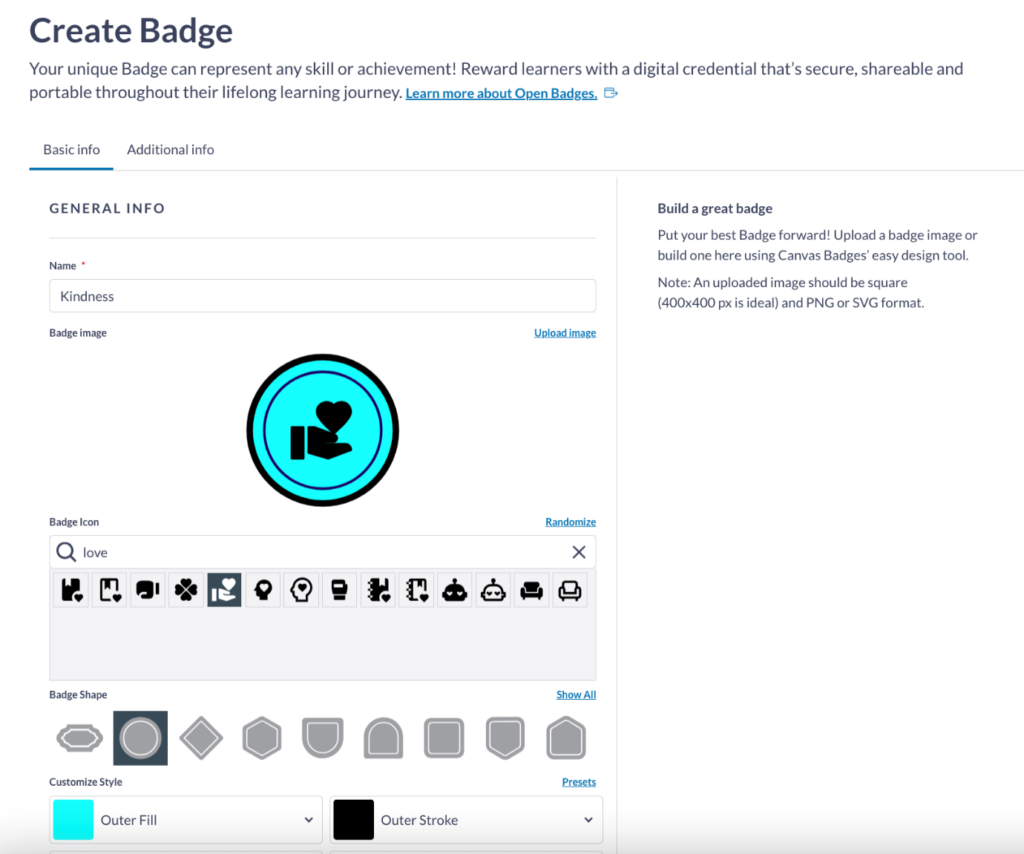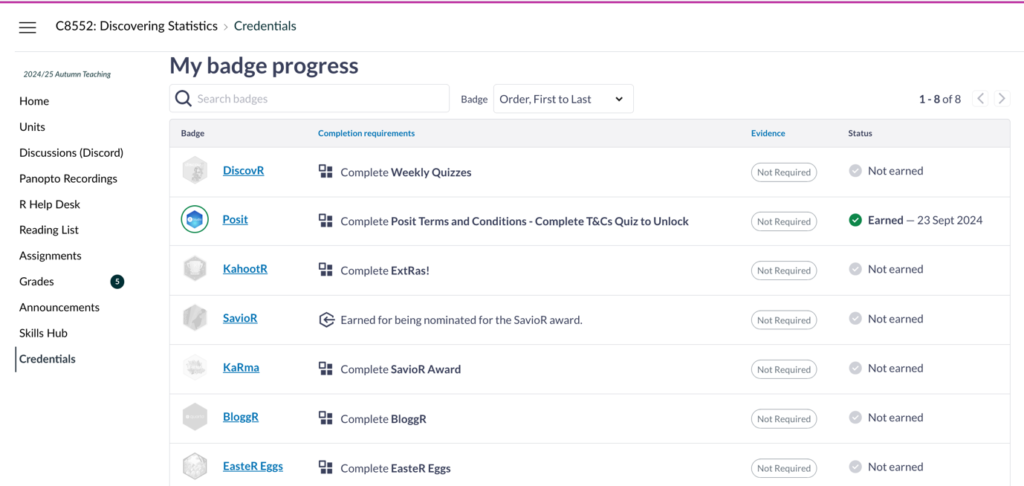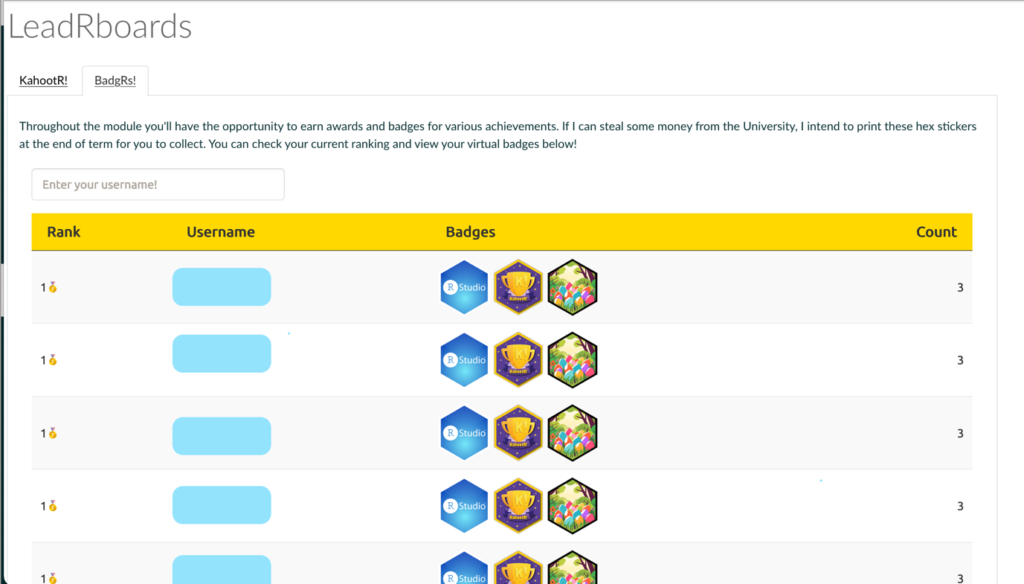by Faye Brockwell, Learning Technologist
Colleagues in the School of Psychology are exploring the use of Canvas Credentials Badges to encourage student engagement on their Discovering Statistics module. The team had already introduced a gamification element to the statistical methods modules, by way of awarding highly-prized* physical Hex stickers to students for reaching key milestones, and were keen to try Canvas Badges as a way of managing the distribution of digital versions of the stickers.
Dr Danielle Evans, Lecturer in Psychology, says “The process of setting up and using Canvas Badges has been surprisingly easy and straightforward. From creating and customising the badges to integrating them with our course, it’s all been smooth. It’s been great to see how students respond, with many engaging more actively to earn their badges and the sticker version of them we’ll hand out at the end of term.”
So what exactly are Canvas Credentials Badges?
Formerly known as badgr, Canvas Credentials Badges allows you to create and award Open Badges. Open Badges are digital certificates recognising learning and achievement. They can be awarded privately, within our Canvas Learning Management System, to encourage engagement on modules, as is happening in the School of Psychology. But there’s more to digital badges than just a sticker. Digital badges “contain metadata within that provides exhaustive information about the tasks performed, criteria of their assessment, the time needed to perform and the volume of the task, etc., that serves in increasing transparency of assessment”. (Trepulé et al, 2021, p132). When digital badges are made public, and students share them, for instance via their LinkedIn profile, the metadata can be read by anyone and serves to give the badges credibility. The University of Edinburgh’s badges site shows some good examples of what open badges can be used for, including badges for Digital Skills and Community Engagement.
So, how does Canvas Credentials Badges work in Canvas?
Once Educational Enhancement add the Canvas Credentials app to your Canvas site, you can then create the badges you need. You can either upload your own designs, as Dr Evans and her colleagues have done with the beautiful Hex stickers, or use Canvas’s in-built badge designer.
You then choose how to award the badges. Canvas can automatically award students a badge for completing a certain activity, such as contributing to a discussion, or reaching a certain score in a quiz. Alternatively, you can choose to award badges manually, with options to award badges in bulk via a spreadsheet. Students can see the badges they can aim for on the module, and track their progress via the Canvas Credentials screen.
Dr Evans has gone one step further, and has even written some code to set up a leaderboard, to “add a fun, competitive edge that motivates students.”
According to Dr Evans “the badge system has been incredibly useful for monitoring student engagement with various tasks and course components. Overall, it’s been a simple yet effective way to enhance the learning experience. I’d definitely encourage others to give it a go!”
How to get started with Canvas Credential Badges
There’s a little bit of set up before you can start using Canvas Badges with your students, so if you’d like to use Canvas Badges, contact your Learning Technologist by emailing ee@sussex.ac.uk.
*The Hex badges in School of Psychology are highly prized by me. I’m still hoping to get my hands on a Hex sticker for joining some of their great staff R workshops.
Further reading
Elena TREPULĖ et al. (2021) ‘How to Increase the Value of Digital Badges for Assessment and Recognition in Higher Education. A University Case’, Informatics in education, 20(1), pp. 131–152. Available at: https://doi.org/10.15388/infedu.2021.07.
Law, V. et al. (2024) ‘A meta-analysis of digital badges in learning environments in educational settings’, Educational Technology & Society, 27(3), pp. 29–45. Available at: https://doi.org/10.30191/ETS.202407_27(3).RP02.








Leave a Reply